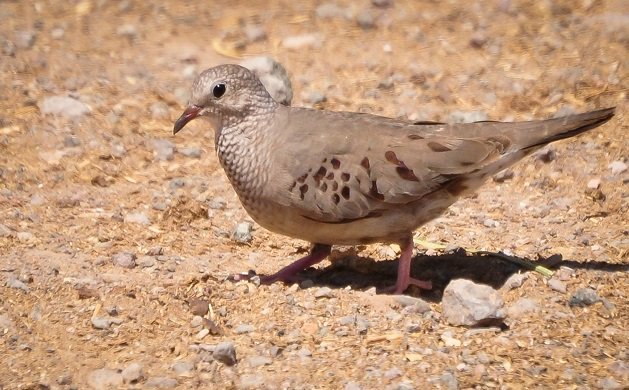
The country of Mexico as a whole, is host to 27 different species of doves, with the California Baja Sur home to six. The Baja, as it is known, is a truly diverse area. There is of course the dry, cactus strewn desert areas, but with mountains up to 7000 feet, the habitat for our local birds is quite varied. We have expanse saltwater lagoons, Rocky ocean shores, and fresh water streams and lakes. This diversity allows for a nice group of doves to both live full time, as well as support a migratory population traveling down from the cold northern part of the US. With a large number of sub-species in many of these doves, I have listed the actual sub-species for this area.
Our most common, and largest dove, is the White-winged Dove, Zenalda asiatica mernsi. While the White-winged Dove is a resident of the southern half of the US and all of Mexico, in the past few years it has been expanding it territory north towards Canada.
The regal White-winged Dove with its beautiful blue orbital ring.
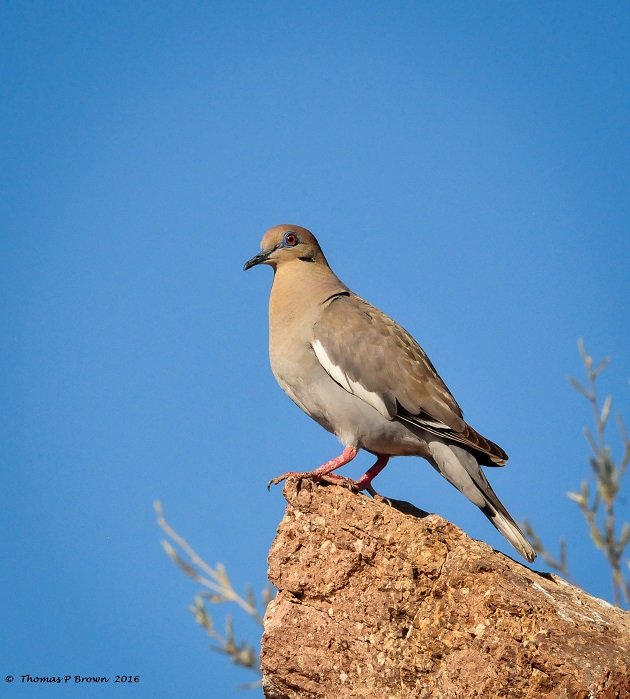
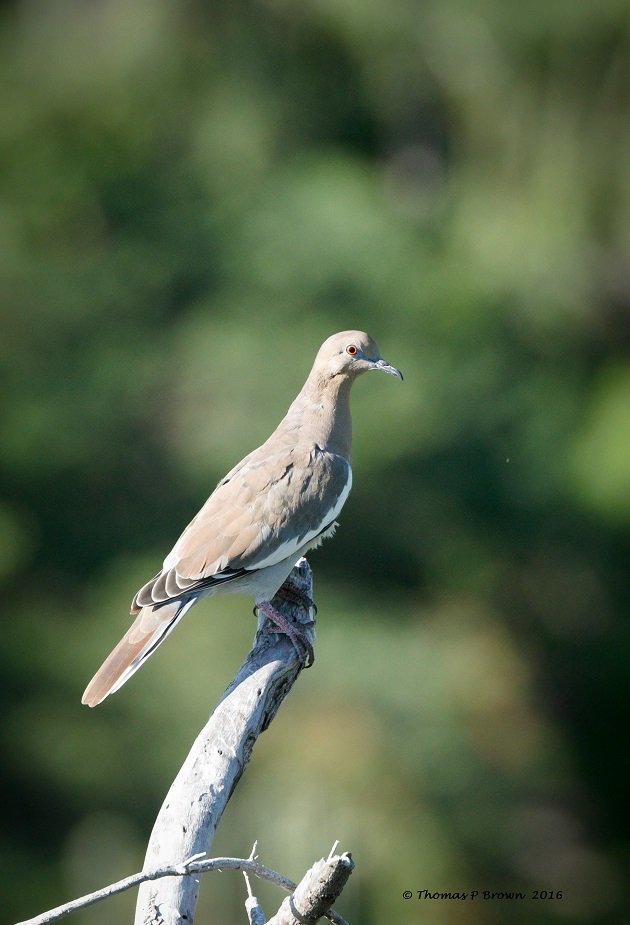
The second most common, is in fact the Common Ground Dove, Columbinia passerine pallescens. This is also, without a doubt, our smallest of our doves. It is often seen in company of the much larger White-winged Doves, where I am often asked if it is a baby. Weighing in at 30 grams, and less than 6 inch in over all length, this is a very small ground dweller. As of the last few days, I have a lovely young couple, with a nest right out side my gallery door, in a palm tree. The feature photo for this story is also of the Common Ground Dove
Here is a nice look at the rufous primaries of the Common Ground Dove
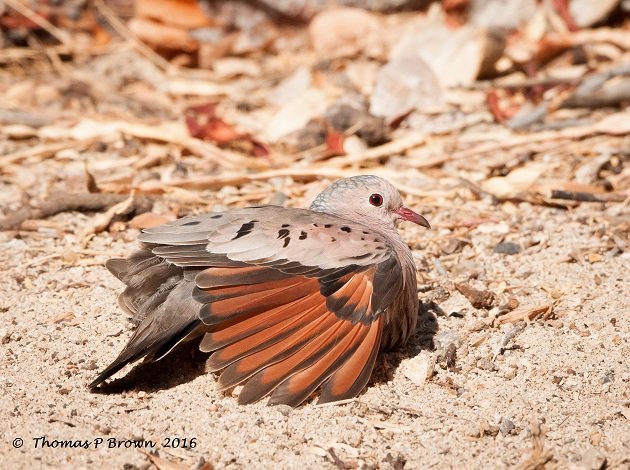
A common migratory species, is the Mourning Dove, Zenaida macroura marginella. While considered a migratory bird for this area, we do have a few the summer over. I guess they like the area as much as I do! Many of the birds that do stay year round tend to congregate around the mangrove trees. It is possible that the dense growth allows for great protection and nesting areas.
A couple of our local resident Mourning Doves
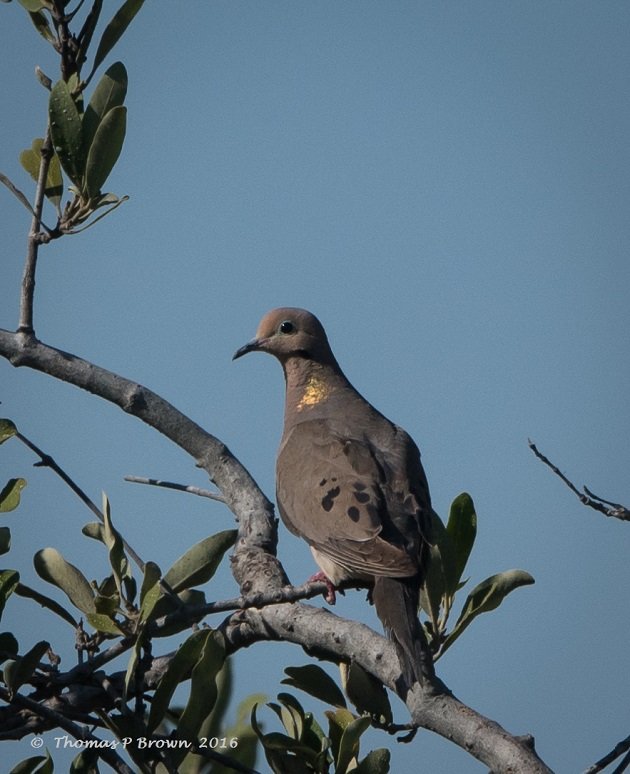
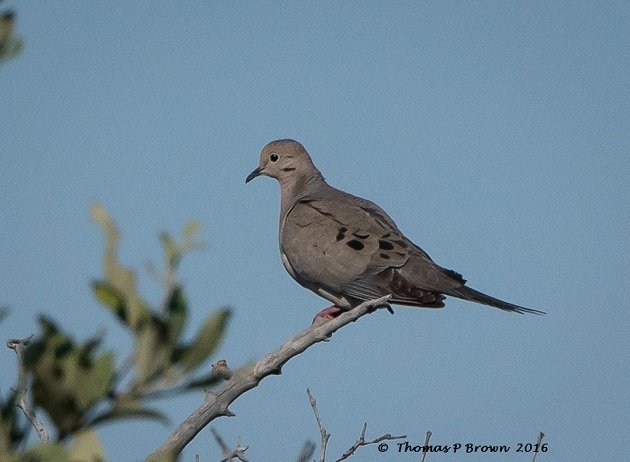
In the southern half of the Baja, especially around the brackish water lagoons, you will find the Ruddy Ground Dove, Columbina talpaloti elute. Very similar to the Common Ground Dove, but with out the obvious scaling on the breast. They are slightly larger, and have a somewhat longer tail.
These Ruddy Ground Doves were found in the saltwater lagoon near San Jose Del Cabo.
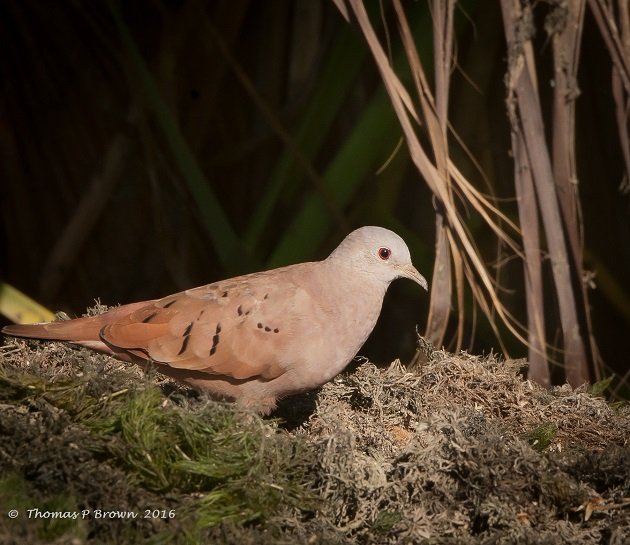
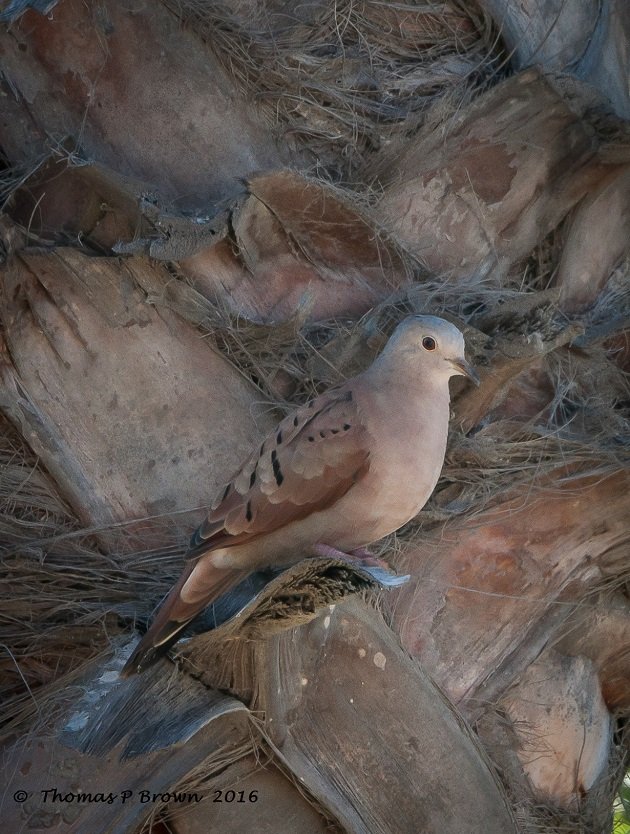
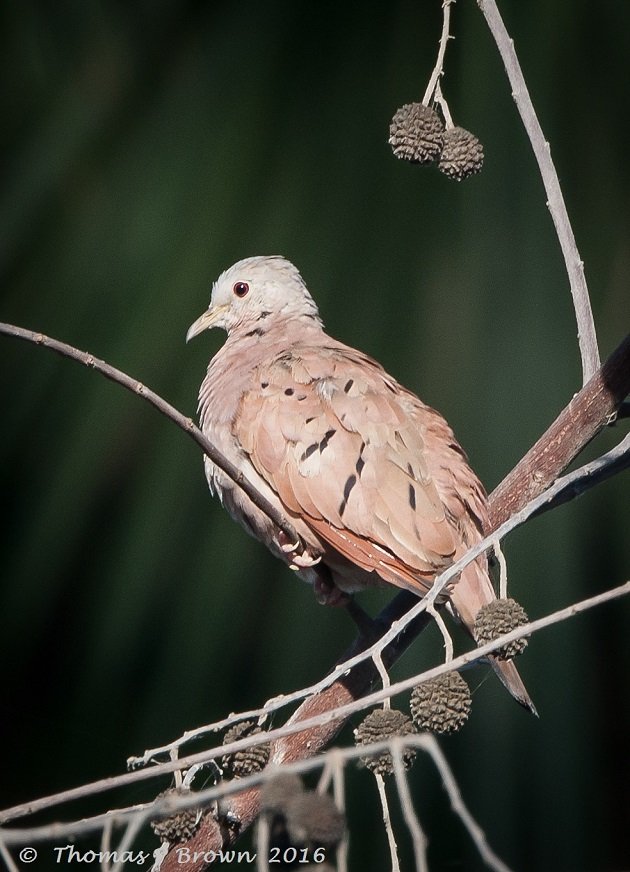
A very rare visitor to the Baja, but worth mentioning, as I have seen them 3 or 4 times, is the Inca Dove, Columbina inca. The dramatically longer tail is the first point of recognition. In the photos below you can see the difference in the tails.
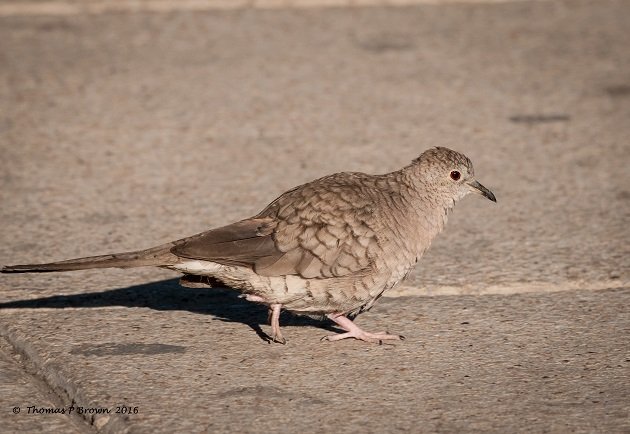
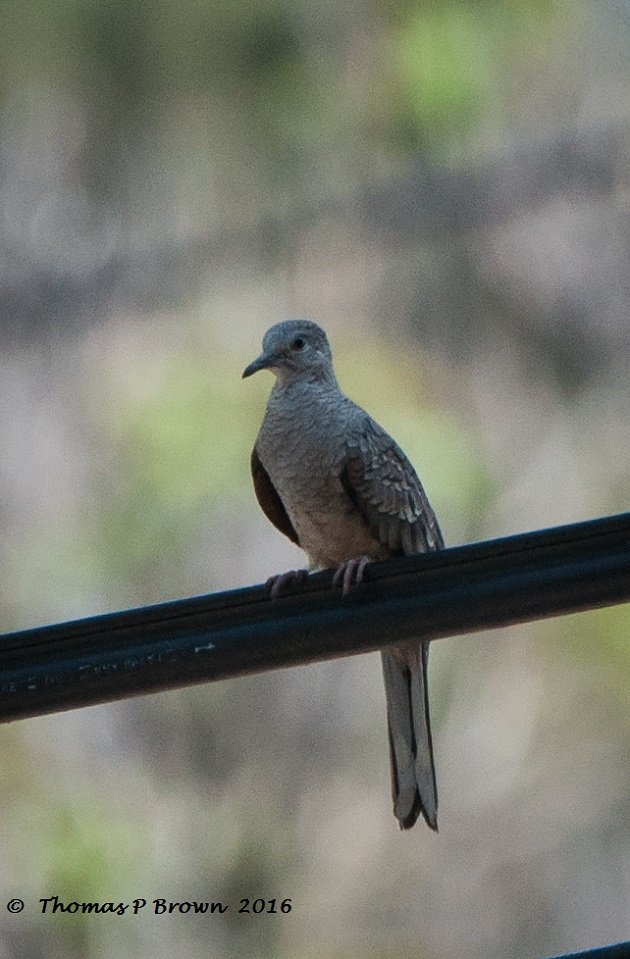
Of course, I will need to mention our local import, now spreading its way across North America, much like the English House Sparrow and the European Starling have, the Eurasian Collared-dove, Streptopelia decaocto decaocto. This lovely dove has been imported from Europe, and is found living mostly in the suburban areas of North America, and Mexico.
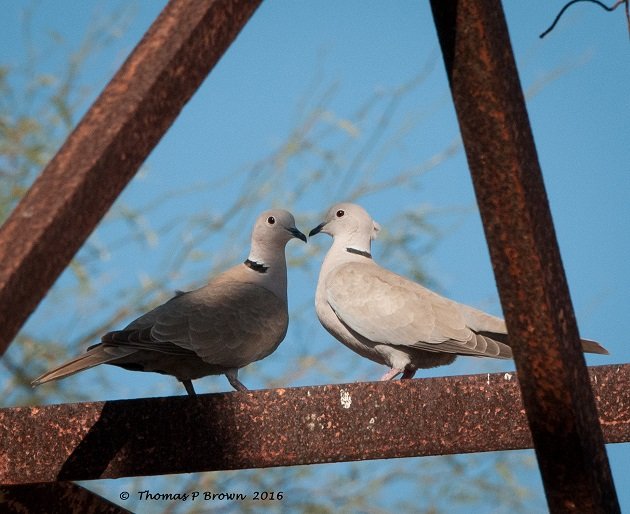












Thanks for the Doves of Baja article. While fly fishing a local river today I listened to Doves; SW Alberta. It reminded me of several springtime beach fishing trips l made to the East Cape region of Baja sur. I stayed in an open structure in the sand dunes and Doves where there every morning. Soothing sound. I wondered if they were the same kind of Doves as here in Canada. I came across your blog and found it informative. Very nice blog and photography.
Robert
I live in Loreto Baja Sur Mexico and we have several types of doves in our mago trees and we thought they were pigeons until I found your blog and now know we have doves in our yard not pigeons. Thanks.2023
Nice article and pics. We have seen all 6 in the Los Barriles area, but primarily White-winged and Common Ground Doves.
I’ve only recently heard people refer to Baja as The Baja. To me it’s like saying The California instead of California, as Baja is short for Baja California and/or Baja California Sur.
Don’t know of any old timers that call it The Baja.